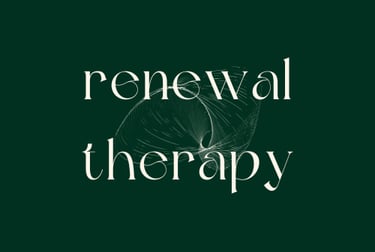Can Brainspotting Help You Process and Transform Traumatic Experiences?
Brainspotting is a powerful, brain-based therapy that helps you process trauma, emotional pain by accessing the parts of your brain where these experiences are stored. Developed by Dr. David Grand in 2003, it works by using your eye position to locate “brainspots” — points in your visual field that are connected to unprocessed memories and emotions.
Rachelle Tersigni
1/11/20253 min read


How Brainspotting Works: A Simple Guide to Deep Healing
Have you ever felt like certain painful memories or emotions just won’t go away, no matter how much you try to move past them? Maybe you’ve talked about these experiences in therapy but still feel stuck. Knowing better, doesn't always mean doing better. If this sounds familiar, Brainspotting might be the transformative approach you’ve been looking for. Let’s break down what Brainspotting is, how it works, and how it can help you heal in ways you never thought possible.
What Is Brainspotting?
Brainspotting is a powerful, brain-based therapy that helps you process trauma, emotional pain, and can even tranform performance blocks by accessing the parts of your brain where these experiences or blocks are stored. Developed by Dr. David Grand in 2003, it works by using your eye position to locate “brainspots” — points in your visual field that are connected to unprocessed memories and emotions.
Here’s the simple but amazing idea behind it: where you look affects how you feel. Your eyes are connected to your brain (hence the name Brainspotting), and by guiding your gaze to specific spots, you can tap into your brain’s natural ability to heal itself.
How Trauma Is Stored in the Brain
When traumatic or overwhelming events occur, the brain's natural processing systems can become overwhelmed. Instead of being fully integrated, the experience can become "frozen" or stuck in deeper, non-verbal parts of the brain. This unprocessed material often resides in the limbic system, particularly the amygdala (which governs the fight, flight, or freeze response) and the brainstem, where instinctual survival responses are regulated.
These unresolved experiences can lead to symptoms such as anxiety, depression, hypervigilance, emotional reactivity, and physical tension. Traditional talk therapies primarily engage the prefrontal cortex, the rational, thinking part of the brain, but traumatic memories are primarily stored in deeper, subcortical regions. Brainspotting uniquely targets these areas where trauma is held.
How a Brainspotting Session Works
Brainspotting taps into the brain’s neuroplasticity, its ability to rewire itself in response to new experiences. The method uses the brain’s intrinsic ability to process and resolve trauma when the right conditions are provided. Brainspotting allows the midbrain and nervous system to reprocess the trauma at a deep, subconscious level, enabling a return to balance.
If you’re wondering what a Brainspotting session feels like, imagine this:
You and your therapist create a calm, supportive space where you feel safe.
Your therapist uses a pointer or follows your eye movements to find a brainspot — a specific position where your brain and body show subtle signs of emotional connection (like a change in breathing or a shift in facial expression).
When the brainspot is located, you maintain focused awareness on that spot while staying attuned to your internal sensations. This dual focus on external eye positioning and internal somatic experience activates the brain's subcortical processes to promote healing.
There’s no need to force anything or “figure it out.” Brainspotting isn’t about analyzing your trauma — it’s about letting your brain process in its own natural, deep way.
Biolateral music is played through headphones, which uses stereo panning that moves left to right but in an asymmetrical rhythm.
This approach can be done in virtual sessions as well.
What does the research say about Brainspotting?
Research shows radical changes in limbic activity whereby the "the brain's response to the memory is "reset" so that the emotional response experienced in the body, is no longer disturbing." This shows there are reductions in dysregulation at a physiological level when recalling traumatic memories or experiences of the past.
Results indicated that single sessions of EMDR and BSP led to significant reductions in subjective distress, suggesting that BSP is as effective as EMDR in alleviating distress associated with traumatic memories.
What Are the Benefits of Brainspotting?
Deeper Healing of Trauma
Brainspotting gets to the root of trauma, allowing you to resolve it more thoroughly than talk therapy alone. Clients often feel a profound sense of relief as emotional burdens are lifted.Reduced Anxiety and Stress
By releasing unprocessed trauma, Brainspotting helps calm the nervous system, reducing anxiety, panic attacks, and chronic stress.Better Emotional Regulation
Imagine reacting to life’s challenges with more calm and clarity instead of feeling triggered or overwhelmed. Brainspotting helps you develop this resilience.Relief from Physical Symptoms
Trauma isn’t just in your head — it’s in your body too. Many people experience relief from tension, chronic pain, or fatigue after Brainspotting sessions.Enhanced Self-Awareness and Growth
Brainspotting often leads to increased insight, creativity, and personal growth. By processing old emotional wounds, you can reconnect with your authentic self and move forward with clarity.
Is Brainspotting Right for You?
Whether you’re dealing with a recent traumatic event, long-standing emotional pain, or even performance anxiety, Brainspotting can be a powerful tool for healing. The process is gentle yet profoundly effective, meeting you exactly where you are in your journey.
Healing doesn’t have to be a struggle. Your brain already knows how to heal — Brainspotting simply helps it do what it was designed to do.
Would you like to give Brainspotting a try? Reach out today to learn how this transformative approach can help you break free from the past and create a brighter, more balanced future.
Resources:
Intentional therapy from the comfort of your own home.
Virtual sessions in the Greater Toronto Area and across Ontario, and Quebec Canada
Telephone: 289-277-6638


Renewal: to make like new : restore one's experience to the freshness of the present, to bring vigor, to replace something old.
Instead of operating from old, outdated psychobiological and neural pathways, slowly over time, we learn to create current, updated pathways that support us to experience what we want for ourselves in life.
